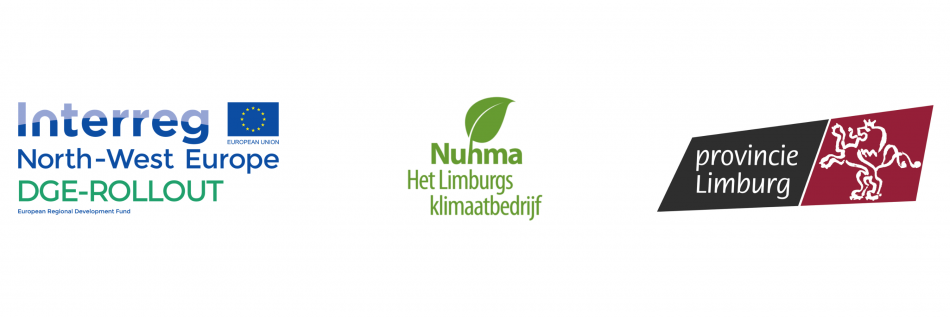Deep geothermal energy involves generating energy using hot water that is extracted from underground, kilometres below the surface. The Campine region in the provinces of Antwerp and Limburg holds a large geothermal potential thanks to a deep, water-permeable limestone formation. VITO is involved in the Interreg NWE project DGE-ROLLOUT, investigating the extent of this potential and how and where this can be most effectively used for the production of renewable energy.
This European project began in late 2018 and joins the efforts of ten partners from Belgium, Germany, France, and the Netherlands. After all, the limestone formation, which runs at three kilometres below the Balmatt site of VITO in Mol, does not stop at national borders. Therefore, our neighbouring countries are also taking an interest in this constantly available, renewable and climate-friendly energy source. With the DGE-ROLLOUT project, the international cooperation partners intend to study the most effective means of geothermal energy extraction in North-West Europe and facilitate its use. The project will run until 2022.
'Deep geothermal energy technology is far from new, so we already have a lot of information available,' says Matsen Broothaers from VITO. 'But we've noticed that its potential is not being fully understood by parties who are able to actually do something with it, such as local authorities, companies, project developers, and investors. By making this information available and adding to it with the help of our international partners, we want to make geothermal energy more accessible.'
Measurement campaign along the channel
One of the project's objectives is to map out the geothermal potential of the limestone formation in order to make the energy supply in North-West Europe more sustainable. It all starts, of course, with detailed knowledge of the subsurface, where the potential geothermal energy reservoirs are located, and what the uncertainties and potential risks of geothermal energy extraction are in those locations. 'There are still many gaps in that knowledge,' notes Broothaers. This is why DGE-ROLLOUT includes a number of local measurement campaigns, such as the one that VITO carried out in October 2020 with financial support from the Province of Limburg and climate investment company Nuhma. Starting from the Balmatt site in Mol, researchers from VITO explored the subsurface with the help of seismic vibrator trucks and vibration monitors along three routes in Mol, Dessel, Balen, Lommel, Pelt, and also in the Netherlands in Bergeijk and Valkenswaard. By also carrying out measurements in our neighbouring countries, VITO established a link to a similar campaign in the Netherlands being conducted by project partner EBN, highlighting the cross-border nature of this Interreg project. 'This project helps us to counteract the fragmentation of information and knowledge, and create a joined-up geological map for geothermal energy potential in our wider region.'
The measurement campaign was conducted over four weeks, after which the raw data were collected and processed. VITO's geothermal energy experts will interpret the results later this spring. It will not be straightforward, since there not only needs to be potential underground, but also sufficient demand for geothermal energy above ground. 'That will also be mapped out,' says Broothaers. 'We are developing two pilots in which we will evaluate both the subsoil and the situation above ground and identify what business case could exist for it.'
In northern Limburg, it seems that Bree and Lommel in particular could potentially benefit from deep geothermal energy due to the presence of energy-intensive industry. The numerous public buildings and the De Vossemeren holiday park in Lommel could also be heated using geothermal energy. The exact nature of this geothermal potential will become clear once VITO's experts have completed their work. If the results are positive, this could persuade other parties to invest in a local geothermal energy project. 'This is, in fact, scientific preliminary research, in a broad and general sense. With this work, we're paving the way for geothermal energy,' finishes Broothaers.


